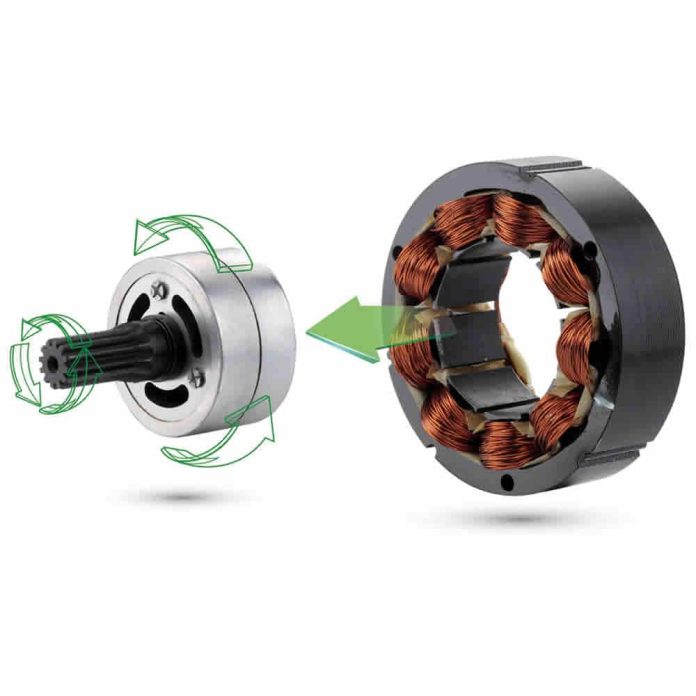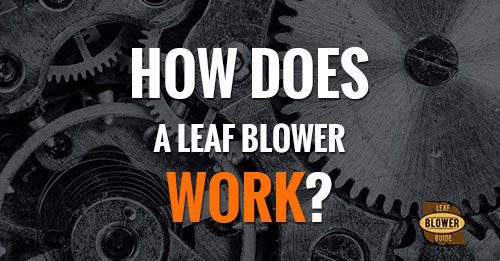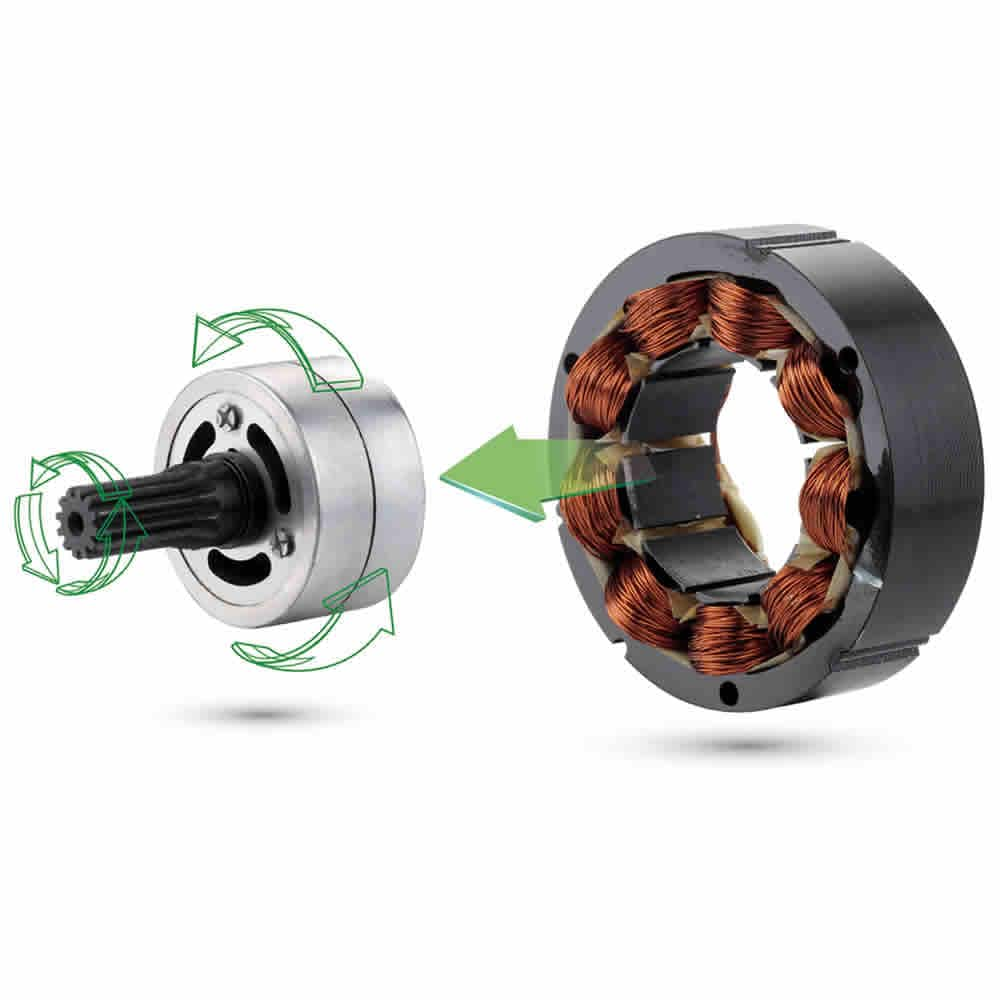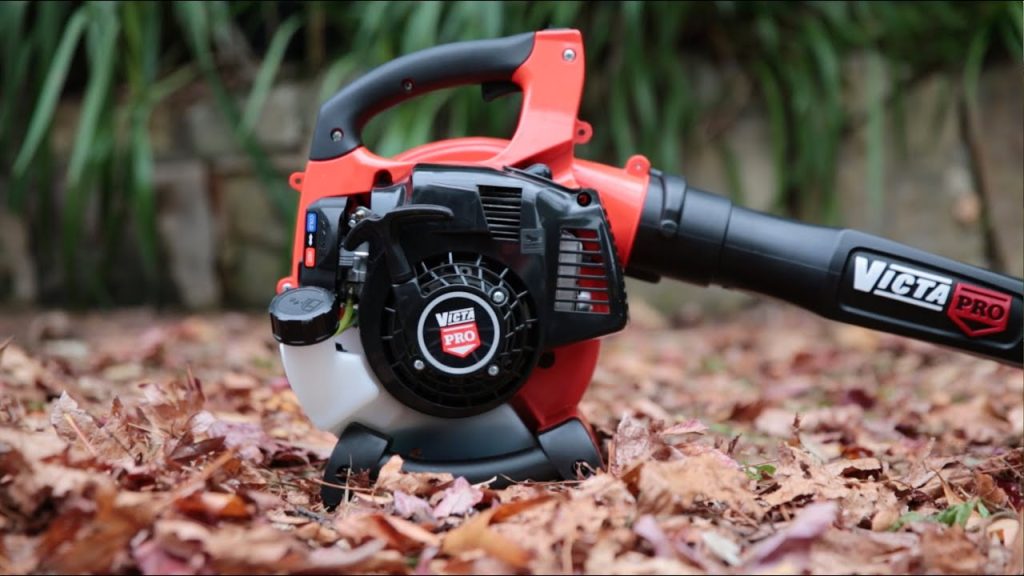Have you ever wondered how a leaf blower works? It may seem like magic, but a fascinating science is behind it.
Air is the key player in this ingenious device. When you turn on a leaf blower, a powerful engine generates a forceful stream of air that propels leaves and debris away.
But how exactly does it create such a forceful stream of air? Let’s take a closer look at the inner workings of a leaf blower and uncover the secrets behind its efficient performance.
Airflow Generation
Internal Combustion Leaf Blower
An internal combustion leaf blower is famous for heavy-duty tasks due to its powerful performance. It is powered by a gasoline engine, providing substantial blowing force to move leaves and debris efficiently.
The engine’s combustion process generates the necessary power by igniting a fuel-air mixture, creating high-pressure gas that accelerates out of the blower. This type of leaf blower typically requires more maintenance and emits more noise and emissions than electric models.
Electric Leaf Blower
Unlike internal combustion leaf blowers, electric leaf blowers are powered by an electric motor, offering a quieter and more environmentally friendly alternative. They can be corded or cordless, depending on the power source.
Corded electric leaf blowers are connected to an electrical outlet, providing a constant power supply. On the other hand, cordless electric leaf blowers rely on rechargeable batteries, allowing you to move around without restrictions. While cordless models offer more flexibility, they may have limited battery life and require recharging.
Power Source
Gasoline Engine
Internal combustion leaf blowers have a powerful gasoline engine that generates the necessary power to create strong airflow.
Gasoline engines provide significant blowing force, ideal for larger areas or more demanding jobs.
However, they require regular refueling with gasoline and proper maintenance to ensure smooth operation. They also produce exhaust emissions and noise during operation.
Electric Motor
Electric leaf blowers, whether corded or cordless, are powered by an electric motor. The motor converts electrical energy into mechanical energy, which drives the blower fan to generate airflow.
Electric motors offer a quieter operation, no exhaust emissions, and lower maintenance requirements than gasoline engines. The power source for electric leaf blowers can vary, either through a constant electrical connection for corded models or battery power for cordless models.
Corded vs Cordless
When considering an electric leaf blower, you can choose between a corded or cordless model. Corded electric leaf blowers are lightweight and provide unlimited runtime as long as they are connected to a power outlet.
They offer consistent power without the need to recharge batteries. However, the downside is limited mobility due to the cord length and the potential for the cord to get tangled or snagged on objects.
On the other hand, cordless electric leaf blowers offer greater freedom of movement without the restrictions of a cord.
They are powered by rechargeable batteries, providing portability and flexibility. However, they may have limited battery life, requiring occasional recharging during extended use.
Air Intake
Fuel or Power Connection
The fuel or power connection is crucial for internal combustion leaf blowers. Gasoline engines require a fuel connection, typically through a fuel tank or reservoir.
The fuel is delivered to the engine for combustion, producing the power needed for airflow generation. Ensuring the proper fuel mixture and following manufacturer guidelines for fueling internal combustion leaf blowers is essential.
In the case of electric leaf blowers, the power connection is either through a cord for corded models or a rechargeable battery for cordless models.
Corded electric leaf blowers must be plugged into a power outlet, providing a continuous power supply. Cordless electric leaf blowers utilize rechargeable batteries that power the electric motor. These batteries must be charged fully before use and periodically recharged as needed.
Air Filtering Mechanism
Both internal combustion and electric leaf blowers need proper air filtration to protect the engine or electric motor from dust and debris.
Internal combustion leaf blowers typically have air filters to prevent particles from entering the engine and clogging vital components. These filters need to be regularly cleaned or replaced to maintain optimal performance.
Although not reliant on air intake for fuel combustion, electric leaf blowers may still have air filtering mechanisms to ensure the motor remains clean and debris-free. Following the manufacturer’s instructions for cleaning or replacing air filters for electric leaf blowers is essential to prolong their lifespan and maintain their performance.
Ignition
Spark Plug
The ignition process is crucial for internal combustion leaf blowers. It begins with a spark plug, which creates an electric spark when supplied with electricity from the engine’s ignition system.
This spark ignites the fuel-air mixture within the combustion chamber, initiating the combustion process and generating power. Regular maintenance, including checking and cleaning or replacing the spark plug, is necessary to ensure proper ignition and efficient operation of the leaf blower.
Ignition Coil
The ignition coil in an internal combustion leaf blower plays a vital role in converting low voltage from the battery or electrical system into high voltage needed to create a vital spark at the spark plug.
The ignition coil ensures a reliable and consistent spark to ignite the fuel-air mixture, contributing to efficient combustion and power generation. It is essential to maintain the ignition coil to avoid issues such as misfiring or a lack of power during operation.
Fuel Injection or Carburetion
Carbureted Engines
Carbureted engines are commonly found in older models of internal combustion leaf blowers. These engines utilize a carburetor to mix the right amount of fuel and air for combustion.
The carburetor creates a fuel-air mixture and delivers it to the combustion chamber, igniting it to generate power. It is essential to tune and adjust the carburetor periodically to ensure optimal fuel-air mixture for efficient combustion and proper performance of the leaf blower.
Fuel-Injected Engines
Modern internal combustion leaf blowers may feature fuel-injected engines, providing more precise fuel delivery and better fuel economy than carbureted engines. Fuel injection systems use electronic sensors and injectors to deliver the right fuel directly into the combustion chamber.
This precise control allows for improved efficiency and reduced emissions. Fuel-injected engines also eliminate the need for carburetor adjustment, simplifying maintenance and ensuring consistent performance.
Compression
Piston
Compression is a critical step in the combustion process of an internal combustion leaf blower. It begins with the movement of the piston, which is housed within the cylinder.
As the piston moves upward, it compresses the fuel-air mixture within the combustion chamber, increasing its pressure and temperature. The piston’s movement creates the necessary compression to facilitate combustion and generate power.
Cylinder
The cylinder in an internal combustion leaf blower provides the housing for the piston and combustion chamber. It is the component where the compression and combustion processes occur.
The cylinder is precisely machined to ensure a proper seal with the piston, allowing for efficient compression and minimizing any pressure loss. Maintaining the cylinder’s integrity is crucial for optimal performance and overall efficiency of the leaf blower.
Fuel Ignition and Explosion
Combustion Chamber
The combustion chamber in an internal combustion leaf blower is where the fuel-air mixture is ignited and combusts, generating power. The spark created by the spark plug ignites the compressed fuel-air mixture, resulting in an explosion.
This explosion rapidly expands gases within the combustion chamber, producing a high-pressure force that drives the piston downward, generating the power needed for airflow. The design and condition of the combustion chamber significantly affect the efficiency and performance of the leaf blower.
Exhaust Port
Once the fuel-air mixture is ignited and power is generated through combustion, the resulting exhaust gases must be expelled from the leaf blower. The exhaust port serves as an outlet for these gases, allowing them to escape into the environment
. Proper ventilation and exhaust design are crucial for minimizing back pressure and ensuring efficient exhaust flow. Maintaining a clear and unobstructed exhaust port is essential for the leaf blower’s performance and preventing overheating.
Air Outlet
Nozzle
The nozzle is the component at the end of the blower tube that directs and focuses the airflow generated by the leaf blower. It plays a crucial role in achieving efficient blowing and targeting specific areas.
Different nozzle designs may offer varying control and airflow concentration levels. Some nozzles may have adjustable features, allowing you to customize the airflow pattern and intensity based on your needs.
Airflow Control
Leaf blowers often feature airflow control mechanisms to adjust the intensity or direction of the generated airflow.
These controls may include variable speed settings or adjustable vents that allow you to control the airflow output. The ability to fine-tune the airflow ensures versatility in different tasks and helps prevent potential damage to delicate surfaces or plants.
Blower Tubes
Blower tubes are an integral part of the air outlet system, channeling and directing the airflow from the blower unit to the nozzle.
They provide a conduit for the high-pressure air generated by the leaf blower and enable accurate targeting of specific areas
. Blower tubes are typically detachable, allowing for easy storage and transportation. Some models may offer interchangeable or extendable tubes to suit different blowing requirements.
Noise and Vibration
Noise Reduction Technology
Leaf blowers, particularly gasoline engines, can produce significant noise during operation. Manufacturers may incorporate noise reduction technology to minimize the noise emitted by the leaf blower.
This technology can include sound-absorbing materials, mufflers, or design modifications to reduce noise levels without compromising performance. Quieter leaf blowers provide a more comfortable working environment for the user and surrounding individuals.
Vibration Dampening
The operation of leaf blowers generates vibrations due to engine or motor movement. These vibrations can cause discomfort or fatigue during prolonged use.
To mitigate this, manufacturers may incorporate vibration-dampening features, such as cushioned grips or anti-vibration systems, into the design. These features help reduce the transmission of vibrations to the user, allowing for a more comfortable and ergonomic experience.
Maintenance
Cleaning and Storage
Proper maintenance is essential to ensure the longevity and performance of your leaf blower. Regular cleaning helps remove debris and dirt that may accumulate on the surfaces, intake vents, or exhaust ports, which can obstruct airflow or cause overheating.
Following the manufacturer’s cleaning and storage guidelines, including properly storing the leaf blower in a clean and dry area is essential.
Engine Maintenance
For internal combustion leaf blowers, engine maintenance is crucial for optimal performance. This includes regular oil changes, spark plug inspection and replacement, fuel system cleaning, and other maintenance tasks outlined in the user manual.
Following the manufacturer’s maintenance schedule helps ensure the engine’s reliability and extends its lifespan.
Air Filter Cleaning
Both internal combustion and electric leaf blowers with air filters require regular cleaning to maintain optimal airflow and prevent engine or motor damage. Dirty or clogged filters can decrease performance, increase fuel consumption, and potentially cause overheating.
Cleaning or replacing air filters according to the manufacturer’s recommendations is essential for maximizing the efficiency and longevity of your leaf blower.
Fuel System Maintenance
Internal combustion leaf blowers with carbureted engines may require specific fuel system maintenance, such as periodic carburetor adjustment or cleaning. Following the manufacturer’s instructions for these tasks is essential to prevent fuel-related issues and ensure smooth operation.
Fuel-injected engines typically have fewer maintenance requirements for the fuel system, eliminating the need for routine adjustments.
In conclusion, leaf blowers generate airflow through power, combustion, and mechanical components. Whether powered by an internal combustion engine or an electric motor, leaf blowers offer versatile and efficient solutions for clearing leaves and debris.
Choosing between gas and electric models and considering factors like airflow control and noise reduction enables users to select the most suitable leaf blower. Regular maintenance and proper care are crucial to keep leaf blowers functioning optimally and prolong their lifespan.








































